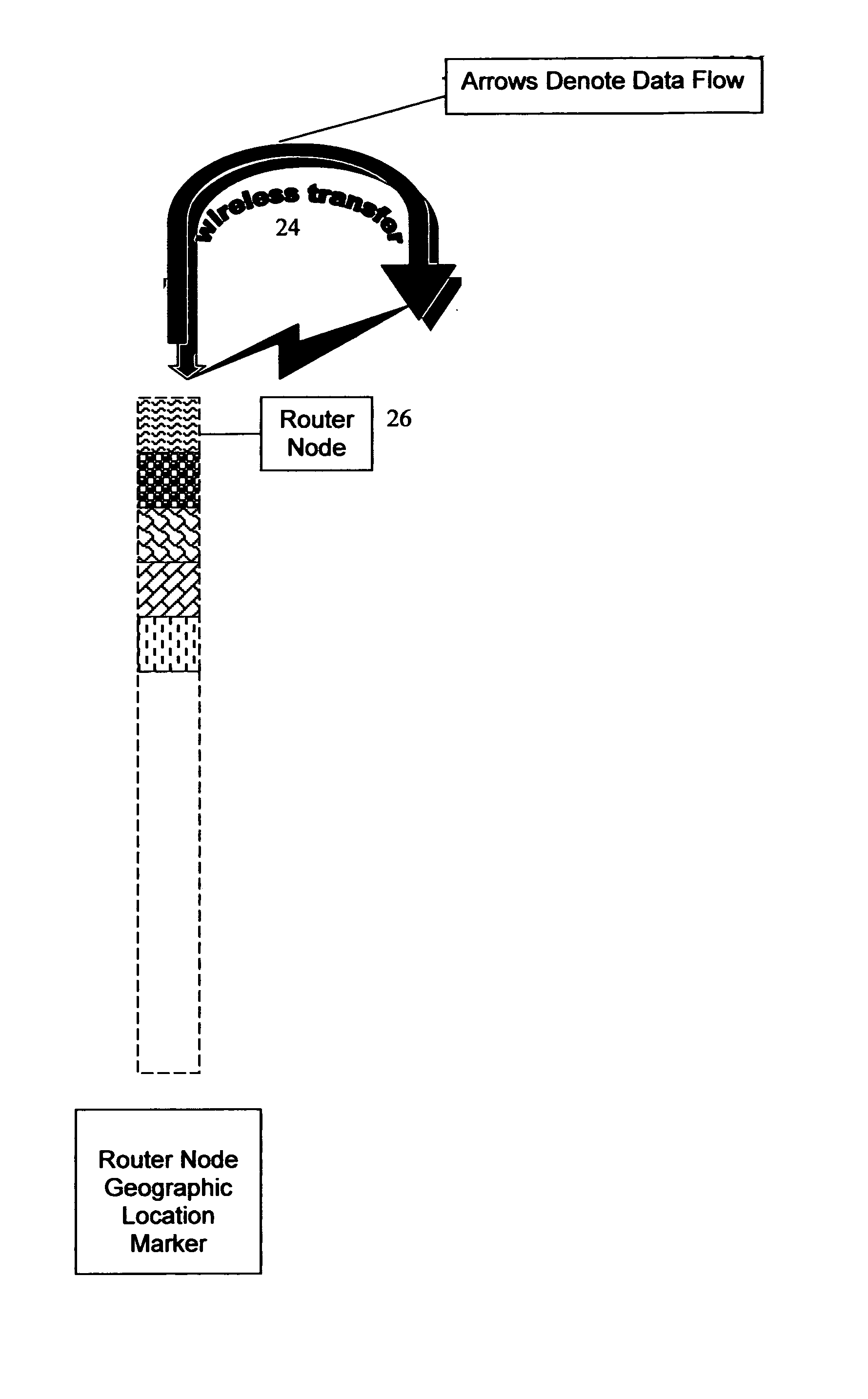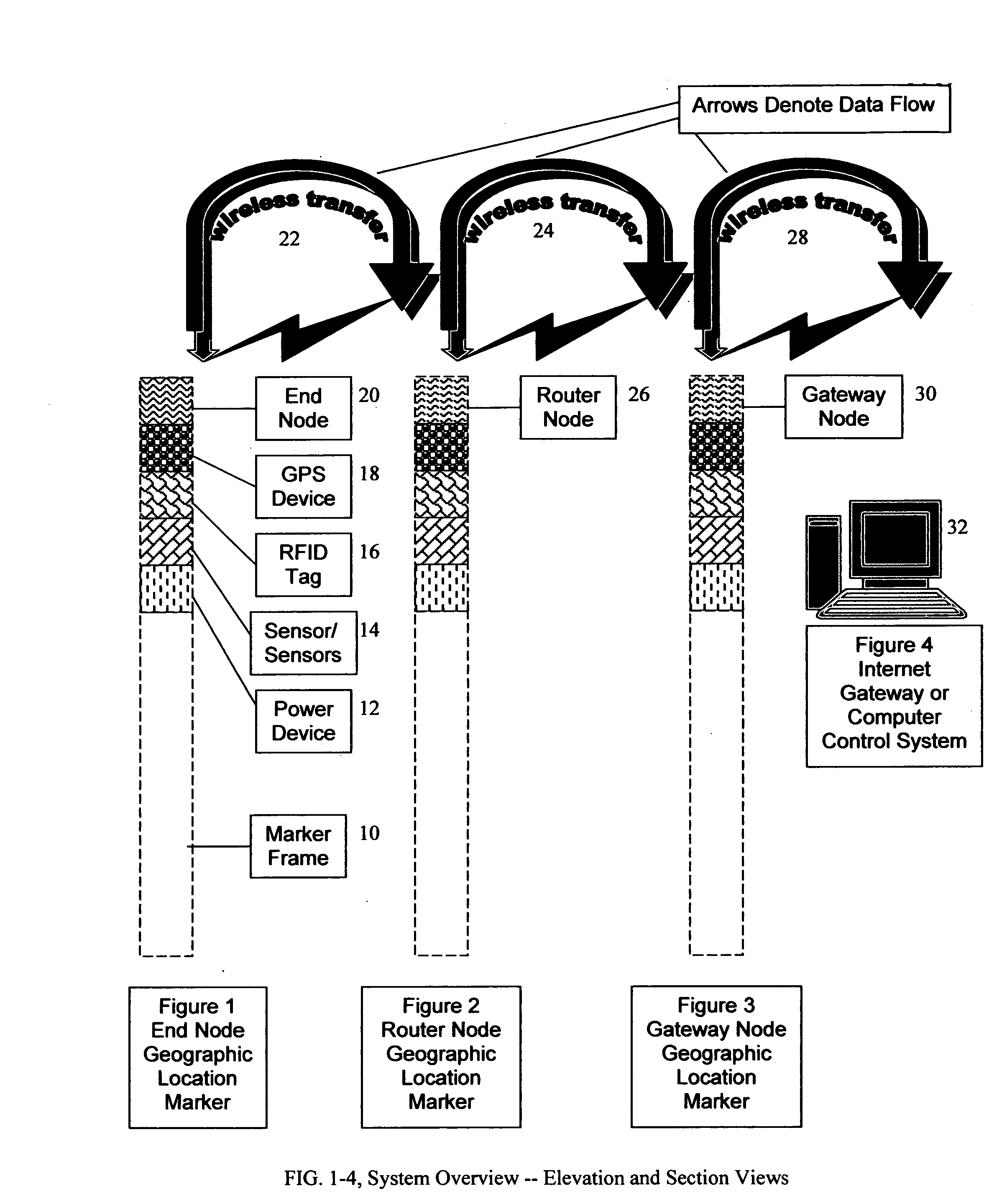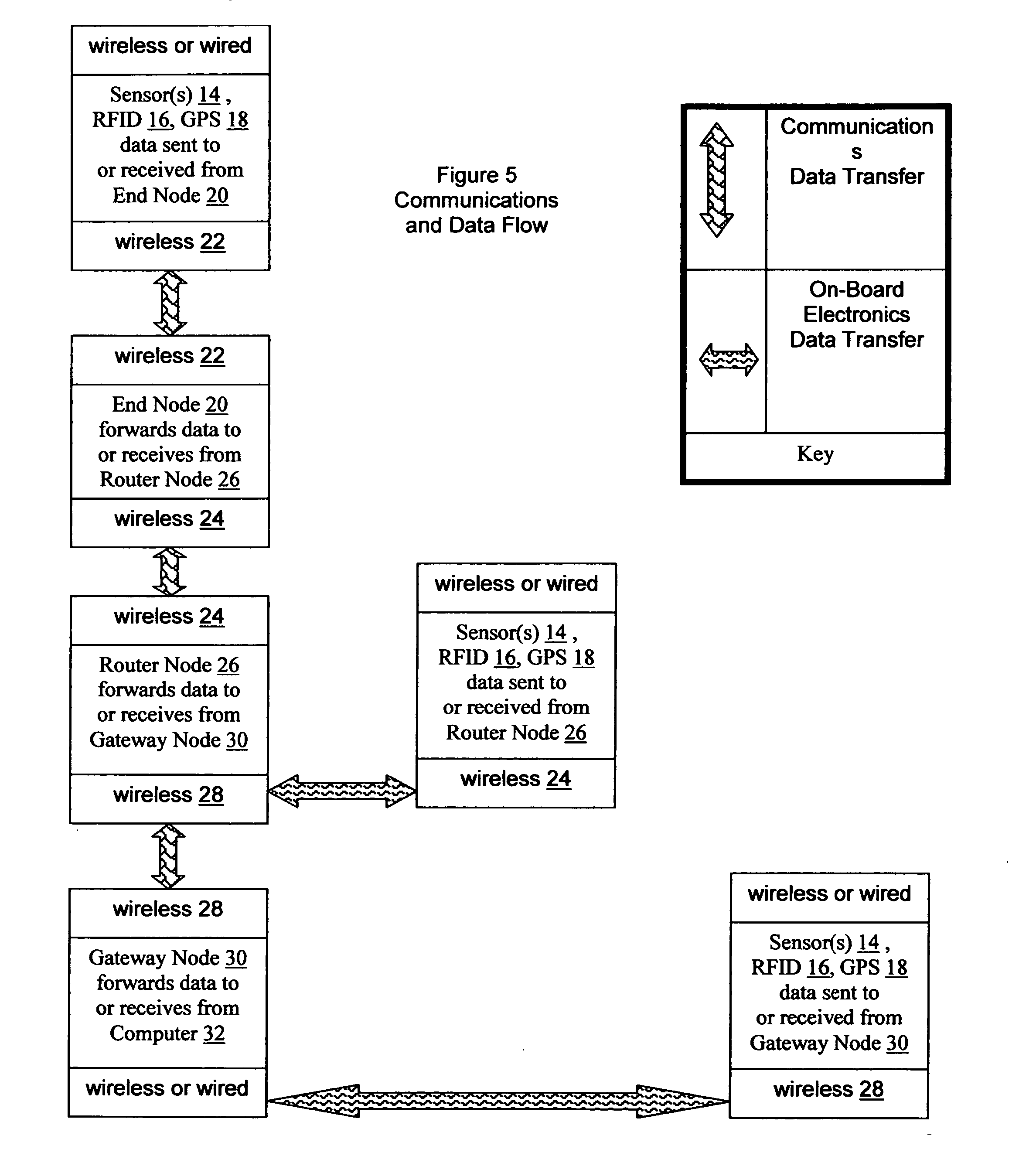Internet-enabled, auto-networking, wireless, sensor-capable, specific geographic location marker based communications network system
a communication network and network system technology, applied in the field of surveillance and photogrammetry, can solve the problems of low production efficiency, low production efficiency, and inability to meet the needs of large-scale, wide-scale, and large-scale data collection and delivery. achieve the effect of low manufacturing cost, low price of sale and economic availability
- Summary
- Abstract
- Description
- Claims
- Application Information
AI Technical Summary
Benefits of technology
Problems solved by technology
Method used
Image
Examples
Embodiment Construction
[0058] In the Background section of this document, I related the issues and problems with the current survey and photogrammetry systems as well as the larger or superset of issues related to the lack of an economical highly granular, ad hoc network, wireless, global communications infrastructure. Example areas within this superset were reviewed. I then reviewed specific needs and the current prior art and shortcomings in these areas. Finally, in this section, I will review my invention which addresses the novel, useful and non-obvious system that fills these needs.
[0059] The Internet-enabled, auto-networking, wireless, sensor-capable, specific geographic location marker based communications network system, the preferred embodiment of which is shown in the elevation and section views of FIG. 1, FIG. 2, FIG. 3, and FIG. 4, electronically gathers and / or transmits wireless data with said data being dictated as to content and format by the customer. Examples of data and their communicat...
PUM
 Login to View More
Login to View More Abstract
Description
Claims
Application Information
 Login to View More
Login to View More - R&D
- Intellectual Property
- Life Sciences
- Materials
- Tech Scout
- Unparalleled Data Quality
- Higher Quality Content
- 60% Fewer Hallucinations
Browse by: Latest US Patents, China's latest patents, Technical Efficacy Thesaurus, Application Domain, Technology Topic, Popular Technical Reports.
© 2025 PatSnap. All rights reserved.Legal|Privacy policy|Modern Slavery Act Transparency Statement|Sitemap|About US| Contact US: help@patsnap.com



